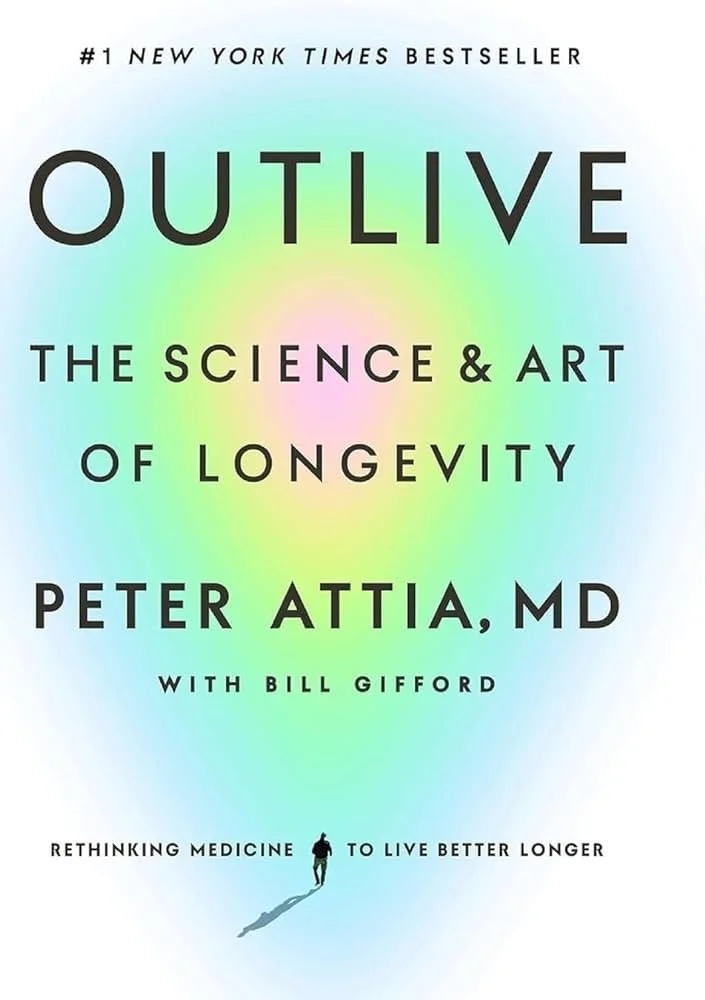Book Review: ‘Outlive: the Science and Art of Longevity’ by Peter Attia
"Outlive" by Peter Attia is an incredibly in-depth exploration into the science and strategies behind extending our years and maximizing them. In Attia’s words, it’s about extending lifespan and increasing healthspan.
One of the toughest things anybody can tackle iis the day-to-day habits that form the foundation of our health, and “Outlive” delivers in spades with tips about how to do it.
Attia, a physician and longevity expert, writes in depth about the diverse factors that contribute to human longevity. The book is sometimes challenging in an academic way, but it’s packed with great advice and is worth the investment it takes to read it.
“Outlive” is equal parts a guide for people seeking to live healthier lives and a call to action that aks medical professionals to transform the way modern healthcare is practiced.
I believe his reaching out to medical professionals who have the ability to transform healthcare from the inside out contributes to the book’s difficulty, but it’s also a goal worth pursuing. This is to say, I think the book succeeds with its unique combination of broad ambition, forehead-scrunching challenge, and broad range of practical advice.
What “Outlive” offers most of us
Attia's approach in “Outlive” combines cutting-edge research with practical advice to empower readers to take control of their health and well-being. Through a blend of personal anecdotes, scientific studies, and actionable tips, Attia provides a roadmap for optimizing every aspect of our lives, including nutrition, exercise, sleep, stress management, and mental health.
One of the most compelling aspects of "Outlive" is Attia's emphasis on personalized health interventions. He recognizes that what works for one person may not work for another, and encourages readers to take a proactive approach to their health by experimenting with different strategies and monitoring their progress over time.
Throughout the book, Attia dispels common myths and misconceptions about longevity, challenging readers to rethink their approach to aging and disease prevention. He explores the role of genetics, lifestyle factors, and environmental influences in shaping our health outcomes, offering practical advice for mitigating risk and optimizing our chances of living a longer, healthier life.
How “Outlive” advocates for Medicine 3.0
Attia divides the timeline of healthcare into three phases: its early years—Medicine 1.0, the current period of responsive care—Medicine 2.0, and what is yet to come: proactive and/or predictive care—Medicine 3.0.
Attia's vision for Medicine 3.0, a concept he explores in depth throughout the book, represents a shift in healthcare—one that is personalized, preventive, and proactive. Drawing on the latest advancements in genomics, biotechnology, and data analytics, the aim of Medicine 3.0 is to revolutionize the way care providers and patients think about health and disease.
Attia argues that by harnessing the power of precision medicine and predictive analytics, we can identify individual risk factors and tailor interventions to each person's unique genetic makeup and lifestyle.
This shift from a one-size-fits-all model to a more personalized approach holds the promise of not only extending lifespan but also improving quality of life by preventing chronic diseases and optimizing overall health.
A vulnerable and humanistic work
In addition to its sturdy scientific foundation, "Outlive" is a humanistic work infused with Attia's compassion for his patients, readers, and himself. He emphasizes the importance of cultivating meaningful relationships, finding purpose and fulfillment, and embracing a positive mindset as essential components of a long and fulfilling life.
Attia encourages us to think critically about sleep, diet, exercise, relationships, mental health, genetics, and how interconnected all of them are to our overall health.
Even though it’s a tough read, “Outlive” is also a great read for anyone interested in increasing the number, and quality of their years.

